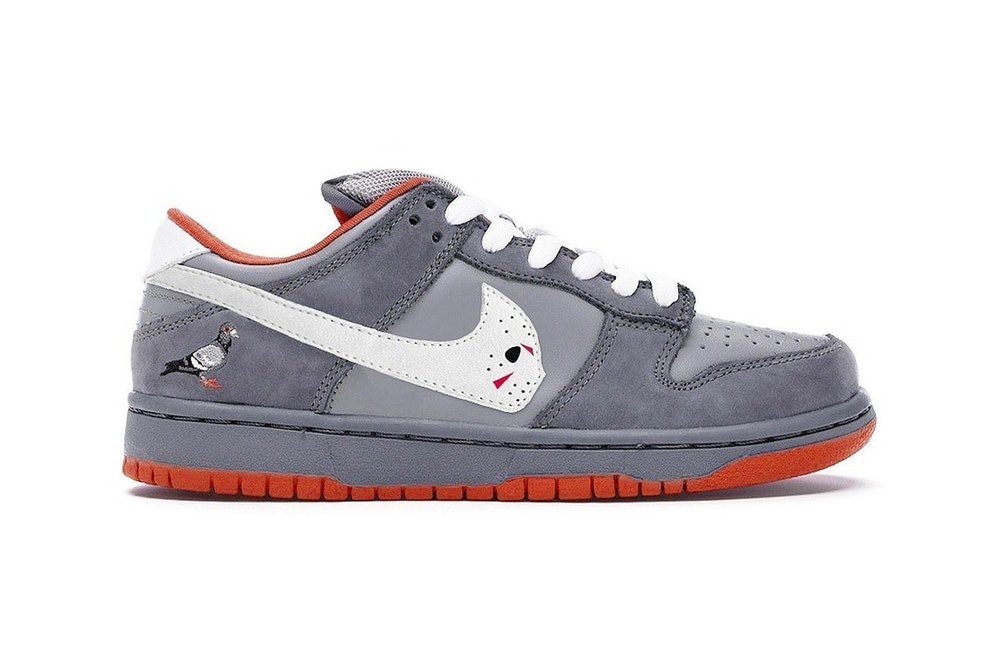When Warren Lotas got hit with a cease and desist followed by a lawsuit for similar designs resonating too close of the Pigeon Dunk and other sneakers, Nike claimed the creations “are not legitimate customizations, they are illegal fakes.” However, with DIY and custom sneaker design becoming popular artistry in the sneaker world, sneaker customizers such as The Shoe Surgeon, Kickstradamus, and DeMarco Custom Sneakers have built businesses around their creations. However, a fine line crosses between customization and infringement, as with cases like Warren Lotas, Lil Nas X and MSFCHFS, and Ari Menthol 10’s.
Globalization and technology welcome the inevitable frontier that allows any shoe model to become copied. Sites like Alibaba have made it easy to access blanks or infringe highly inspired modified models of your favorite sneakers. Some have used these models to create their own sneakers through customization. They also have created their own lines, or falsely claim deals and collaborations with sneaker companies.
The thin line between customs and counterfeits has accounted for some of the most interesting copy infringement cases. For example, the viral marketing incentives around Lil Nas X’s “Satan Shoes” with creative collective MSCHF. These infamous sneakers garnered mass media attention and a ball of Twitter trending topics. Big sneaker brands employ counsel to protect their marks, copyrights, and other intellectual properties. However, what companies and individuals can take to safeguard their intellectual property and designs is a cease and desist.

Nike has sued Warren Lotas for selling a shoe that is “confusingly similar” to the brand’s Pigeon Dunk sneaker. 
Lil Nas X used the controversial ‘Satan Shoes’ with MSCHF to promote his newest single. This case has been one of the biggest suits Nike has served. 
One of the most infamous sneaker bans, Ari Forman’s Infamous “Menthol 10” is inspired by the Air Jordan 1.
What is a cease and desist letter?
By definition, a cease and desist letter is a common method used to resolve a dispute between two or more parties. However, it is not legally binding and isn’t filed in court.
Instead, this letter will be sent to the individual or business to ask them to stop an activity infringing on their rights. A cease and desist letter is also commonly referred to as a “stop harassment letter” or a “demand letter.” This letter is usually sent before an injunction or lawsuit as a warning. To avoid going to court and accumulating litigation costs, cease and desist letters are one of the cheapest and quickest ways to resolve a matter.
A cease and desist letter also serves as evidence that they’ve given notice to the other party for their alleged infringement. If the other party chooses to continue their behavior after receiving the notice, a stronger legal claim can be made against them.
What is a cease and desist order?
While a letter comes off as a warning, a cease and desist order is legally binding to the court. Known as an “injunction” or “restraining order,” the order is official and issued by a government agency or a court. A cease and desist order communicates to a person or company to stop engaging in illegal activities, or they will face penalties such as fines or jail time.
A cease and desist letter and order are negotiation tactics giving a warning sign before further legal action occurs.
Different types of cease and desist and why you’re getting one
- Infringement of intellectual property rights. Intellectual property such as copyright, patent, or trademarks gives you certain rights. Someone is breaching your rights If another individual or business uses your protected work without your consent. This is the common use of cease and desist. Sending a cease and desist letter in these situations is often a quick way to get the other party to discontinue this behavior.
- Debt collection services. A cease and desist letter may be an effective way to get debt collection agencies or attorneys to stop harrasing you through continuous calls. While you can force them to stop contacting you through the Fair Debt Collection Practices Act, it is important to keep in mind that the letter does not eliminate your debt.
- Slander and libel issues. If a person is spreading falsehoods about you that are untrue, your business or your individual reputation can suffer irreparable harm. These cases are far more common in the digital sphere. Slander and libel are forms of defamation, and sending a cease and desist letter could be your first step in stopping this behavior.
- Harassment. There are various ways that other parties could harass you. While sending a cease and desist letter to a harasser could be a way to stop their behavior, it is important to understand that a cease and desist letter could cause a harasser to react adversely. There are various situations where it may be better to go directly to law enforcement or the courts for a restraining order.
How to handle if you get a cease and desist:
I would say 90% of these cease and desist letters are settled before they make it to court. And they’re either resolved amicably or forcefully outside of the courts. – Kenneth Anand
- Relax. Don’t panic. A reminder that cease and desist letters and orders are warnings.
- Consult with a lawyer. Understand the complete letter or order and what’s at stake. Is there an understanding of what you’re infringing and your rights? Understand your choices? Do you understand the action if not complying?
- Give a response. Acknowledge that you have received the letter. Orders are certified mail in which there is legal signature confirmation. Understand your choices and respond with what action you’ll be taking.
- Find a way to settle. So there’s weight to the cease and desist? Acknowledge through settling and avoid taking it to court. Going to court is more expensive in the long run.
- Do not ignore. Sneaker Law, co-author Jared Goldstein, immediate advice is to not ignore cease and desist letters and orders.
You want to respond to it, because if you ignore it — it can get worst. Ignoring it is not the way to go. – Jared Goldstein
In the newest module in Sneaker Essentials, Sneaker Law co-authors Kenneth Anand and Jared Goldstein break down intellectual property and considerations of sneaker deals. Explore Sneaker Essentials, a course powered by Yellowbrick alongside FIT and Complex by visiting yellowbrick.co/sneakers.
Disclaimer: This blog post is provided for informational purposes only, and should not be construed as legal advice on any subject matter. The contents of post contain general information and may not reflect current legal developments or address your situation.




